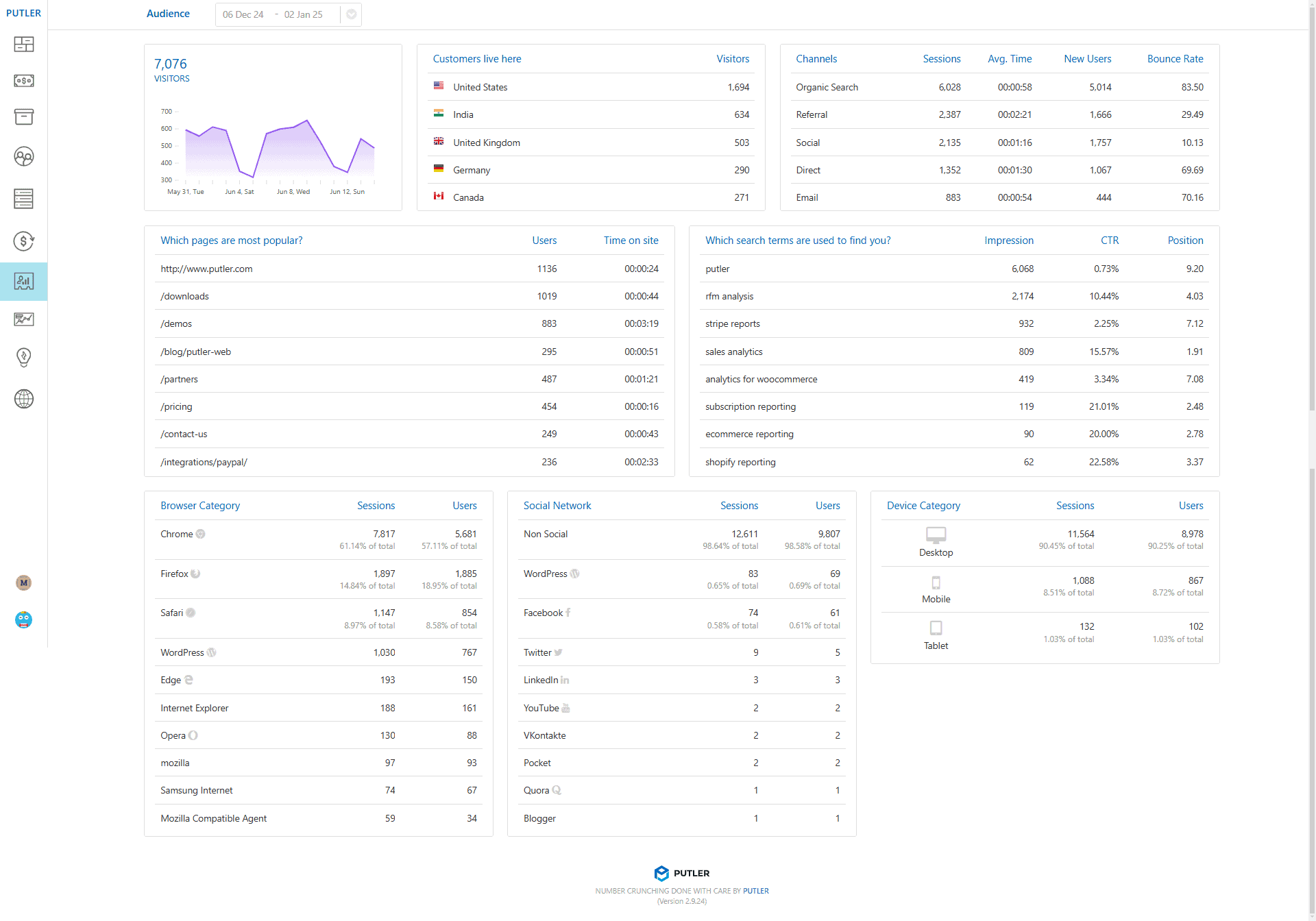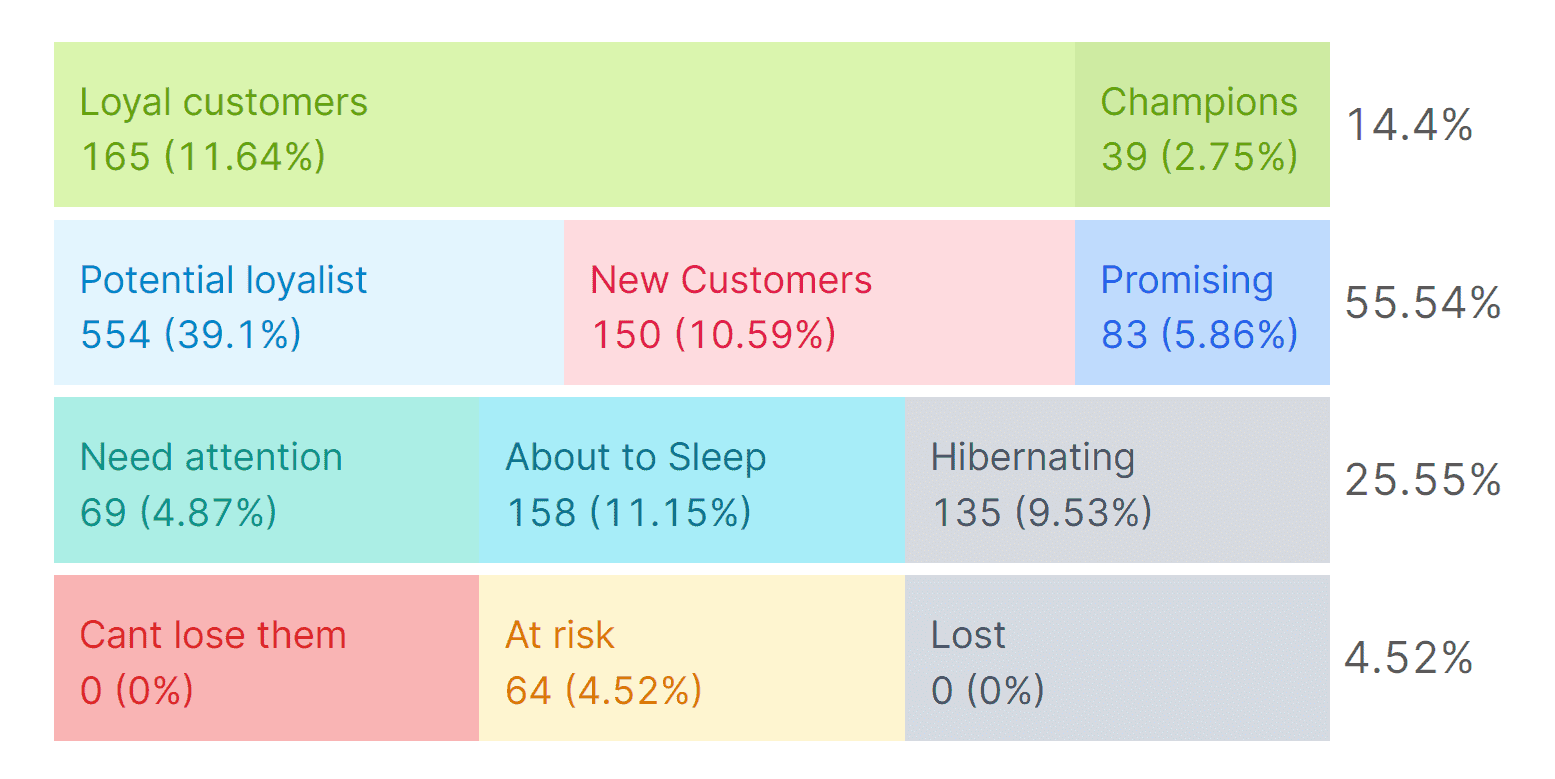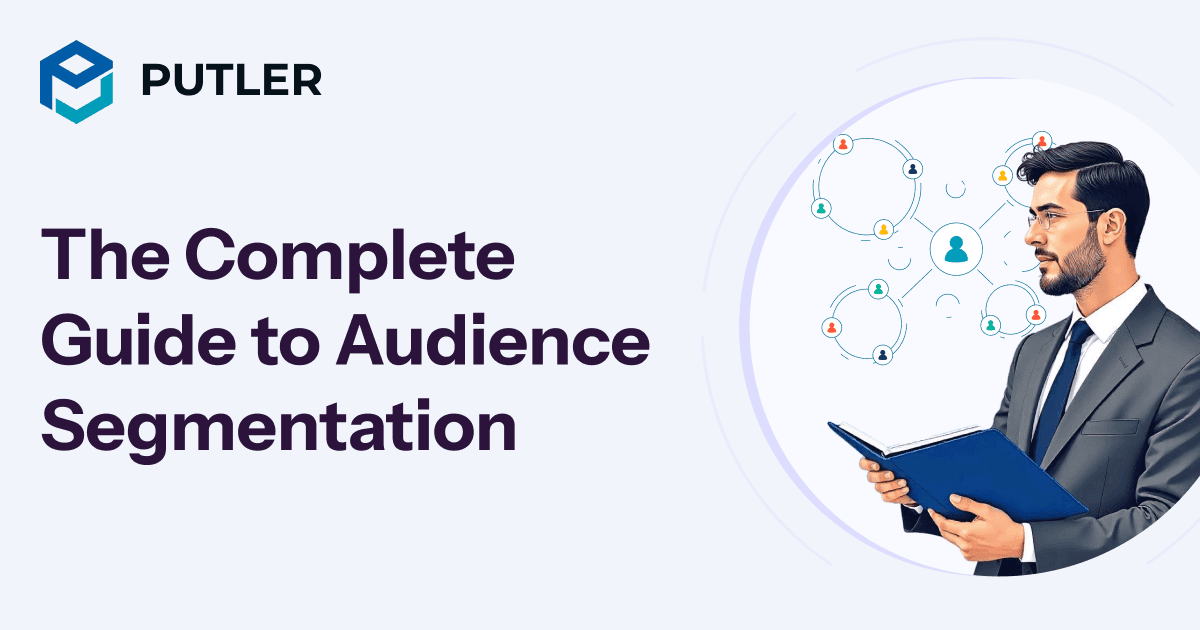Imagine you walk into your local hardware store for the third time this month. The owner greets you with, “Hey, how did that garden trellis project turn out?”
Meanwhile, the big box hardware chain down the street sends you a generic email about snow blowers in July, while you live in Florida.
Which business would you rather give your money to?
Generic marketing today feels like standing in Times Square with a megaphone, shouting at everyone and hoping the right people listen. It’s noisy, inefficient, and, frankly, a little desperate.
Yet, surprisingly, most businesses are still blasting identical messages to wildly different audience segmentations and wondering why their conversion rates hover in the single digits.
The numbers don’t lie: ROI of personalized marketing
For those who love hard data, here’s why segmentation deserves your immediate attention.
- Segmented emails work: They generate 760% more revenue than generic campaigns.
- Personalization matters: 80% of consumers are more likely to buy when brands tailor experiences to them.
- Better segmentation, better results: Companies using advanced strategies see a 20-30% increase in customer value.
- Expectations are rising: 52% of customers now expect personalized offers, up from 49% in 2019.
The most telling statistic? Businesses that excel at segmentation can achieve conversion rates higher than those that don’t while spending less on their overall marketing budget.
Understanding the Segmentation Mindset
Let’s get started…
Moving from “One Audience” to “Many Audiences”
Think about the last time you were in a room full of strangers. While an outside observer might see just “a group of people,” you probably noticed distinct types: the quiet observers, the enthusiastic networkers, the industry veterans, and the curious newcomers.
That’s exactly what audience segmentation does for your customer base. It transforms a faceless crowd into distinct groups with unique needs, behaviors, and potential value to your business.
Beyond basic sorting: True segmentation
Many businesses mistake basic demographic sorting for true segmentation. Knowing someone’s age, gender, or location is just the starting point, and sometimes not even that relevant.
True audience segmentation goes deeper by combining multiple dimensions to create actionable groups:
“Female, 25-34, urban” isn’t a useful segment.
“First-time mothers in urban areas who purchased a stroller in the last 30 days and browsed baby monitors twice without purchasing” — now that’s a segment you can do something with.
Common Misconceptions About Audience Segmentation
Let’s clear up some myths that keep businesses from segmenting effectively:
Myth #1: “I need tons of data to start segmenting.”
Reality: Even basic purchase history and email engagement data can create powerful initial segments.
Myth #2: “More segments are always better.”
Reality: Most businesses see the best results with 5-7 core segments that receive truly differentiated treatment.
Myth #3: ” Audience segmentation is just for email marketing.”
Reality: Effective segmentation should inform your entire customer experience, from website personalization to ad targeting to customer service protocols.
Myth #4: “Segmentation is a one-time project.”
Reality: Customer behavior evolves constantly, making segmentation an ongoing process of refinement and discovery.
Small business segmentation: Starting simple but effective
Don’t have an enterprise data warehouse or a team of analysts? No problem. Here’s how smaller businesses can start segmenting effectively:
- Begin with purchase recency, frequency, and monetary (RFM) value — these three data points exist in even the simplest sales records.
- Add basic engagement data — who opens emails, who visits your website, who follows you on social media?
- Incorporate origin information — how different customers found you initially can reveal a lot about their needs and preferences.
- Listen for direct feedback — sometimes simply asking customers about their preferences creates your most valuable segmentation data.
About the last point, while customer feedback is helpful, what people do matters more than what they say. Actual behavior, like purchases and engagement, gives you more reliable insights for audience segmentation.
Doggyloot improved open rates by 10.2% and click-through rates by 410% just by segmenting based on dog size. This worked because owners of small, medium, and large dogs have different product needs, making promotions more relevant. This simple tweak drove 13% of their daily revenue.
The building blocks: Types of segmentation that actually work
Let’s explore the four fundamental types of audience segmentation that create real business results.
Demographic segmentation: Beyond just age and location
Demographics are the “who” of your customer base, the basic characteristics that define them:
- Age, gender, income level
- Location and geography
- Family status and household composition
- Education and occupation
- Cultural and ethnic background
While these factors seem basic, combining them can yield powerful insights. For example, new parents in urban apartments have fundamentally different needs than new parents in suburban homes, even though both groups have “new parent” status.
Behavioral Segmentation: What Actions Reveal About Intentions
Behavioral data is the “what” of your customer base, the actions they take (or don’t take):
- Purchase history and patterns
- Product usage behavior
- Cart abandonment and browsing habits
- Loyalty program engagement
- Feature or service utilization
Behavior often tells a more accurate story than what customers say. A customer who browses the same product category five times is showing interest, regardless of whether they’ve explicitly stated that preference.
Psychographic Segmentation: Understanding the “Why” Behind Purchases
Psychographics are the “why” of your customer base, the motivations and values driving decisions:
- Lifestyle choices and priorities
- Personal and professional goals
- Values and beliefs
- Personality traits
- Interests and hobbies
This is where segmentation becomes truly powerful. Two customers might buy the same product for completely different reasons. For example:
- Nike markets its shoes differently to performance-driven athletes vs. casual sneaker enthusiasts.
- Tesla attracts customers seeking sustainability, status, or cutting-edge technology—all requiring different messaging.
Technographic Segmentation: How Device Usage Impacts Buying Behavior
Technographics are the “how” of your customer base — the technology preferences that shape interactions:
- Device preferences (mobile, desktop, tablet)
- Technical sophistication level
- Software and platform usage
- Browser and app preferences
- Online-offline integration needs
A customer who exclusively shops via smartphone requires a different experience than one who researches on mobile but converts on desktop. Similarly, early technology adopters respond to different messaging than technology laggards.
The true power of audience segmentation comes from combining these approaches. When you understand who a customer is, what they do, why they do it, and how they prefer to engage, you can create marketing that feels less like an interruption and more like a helpful service.
Solving the audience segmentation puzzle with Putler
Ever felt like you’re drowning in customer data from a dozen different platforms? Gone are the days of jumping between Google Analytics, your payment processor, and your eCommerce platforms, trying to manually match up who’s who. Putler brings everything into a single, intuitive dashboard.
How Putler’s Audience Dashboard Simplifies Complex Segmentation

Putler’s Audience Dashboard brings together visitor data from Google Analytics and Google Search Console.
Unlike traditional analytics tools that just show numbers, Putler connects visitor behavior to real revenue, helping you focus on what truly matters—your paying customers.
What Putler’s Audience dashboard shows you:
- Which pages are most popular (beyond just traffic numbers)
- Which search terms people are using to find you
- How impressions translate to clicks
- Where your content ranks in search results (Avg. positions)
- Which social media brings the most traffic
- Which browser and devices does your audience use
Leveraging RFM Analysis for Automatic Customer Categorization

One of Putler’s most powerful features is its automated RFM (Recency, Frequency, Monetary value) analysis.
Instead of making you crunch numbers, Putler automatically segments your customers based on their real buying behavior.
Imagine your customer base neatly organized into 11 actionable groups. Here are some of them:
- Champions: Your VIPs who buy often and spend big.
- Loyal Customers: Reliable spenders who respond well to promotions.
- Potential Loyalists: Recent customers showing promising behavior.
- Customers Needing Attention: Good customers who haven’t purchased recently.
- At Risk: Previously great customers who are slipping away.
This means no more guesswork, just highly targeted marketing that drives real results. Send precisely the right message to the right people at the right time.
Location and Behavior-Based Filtering Capabilities
Want to see how customers from California shop versus those from New York? Putler’s advanced filtering capabilities make it easy.
The location-based filtering is particularly powerful for businesses with regional variations in customer behavior.
Putler doesn’t just give you data, it gives you clarity. By combining behavioral, revenue, and location-based insights, it turns raw numbers into real strategies that drive sales.
Conclusion
Successful audience segmentation isn’t just about grouping people—it’s about understanding them. As Seth Godin said, “Don’t find customers for your products, find products for your customers.” By refining your segments and listening to your audience, you’ll create meaningful connections that drive lasting growth and customer loyalty.
